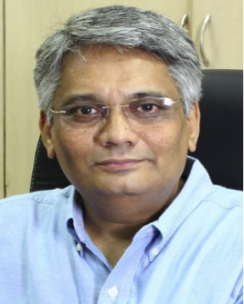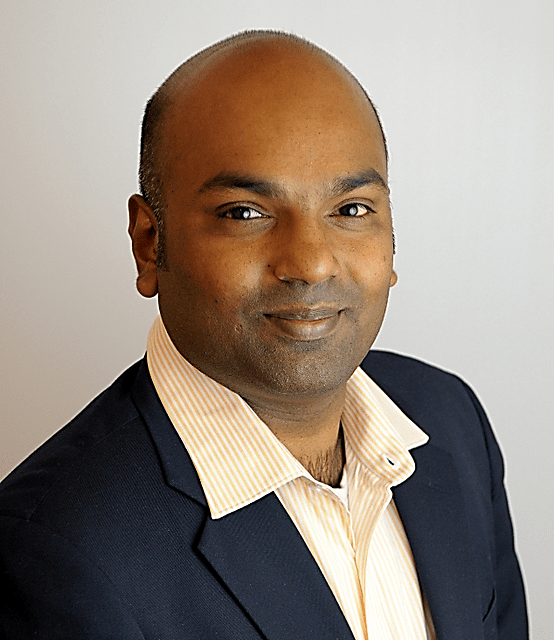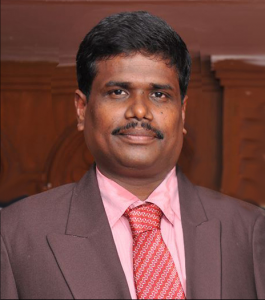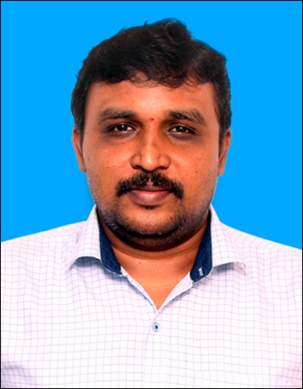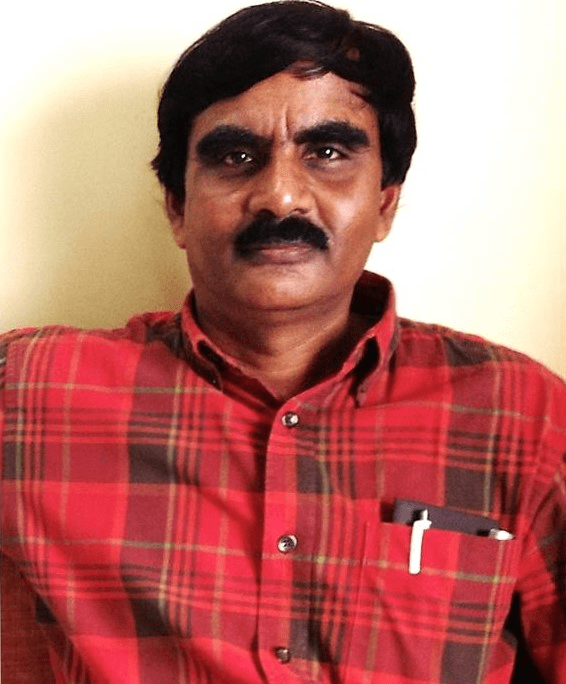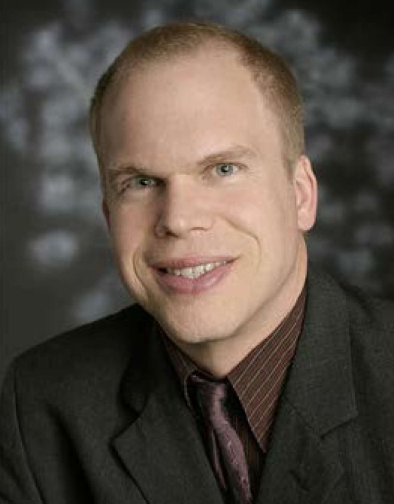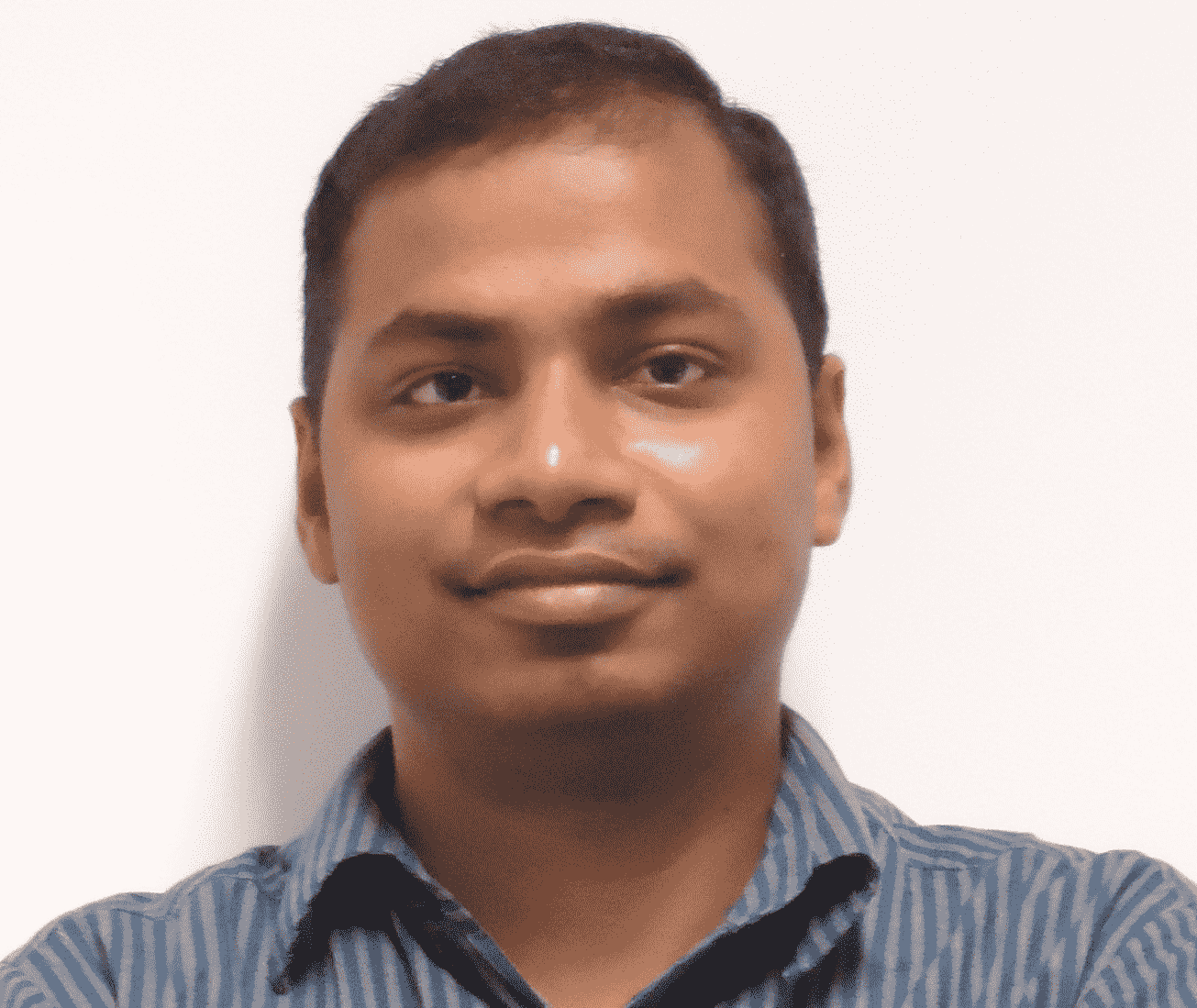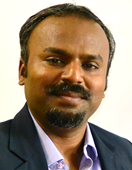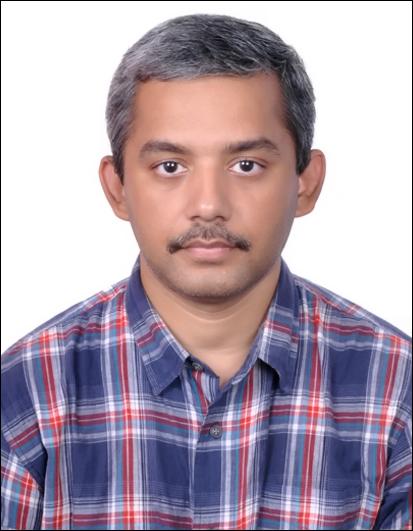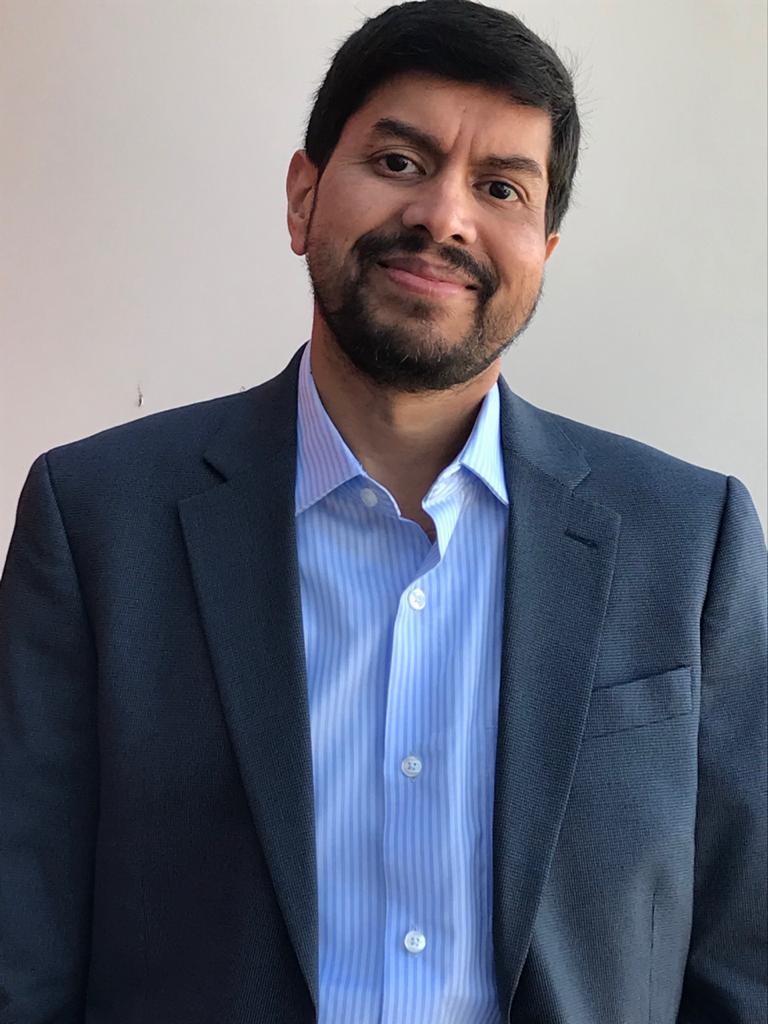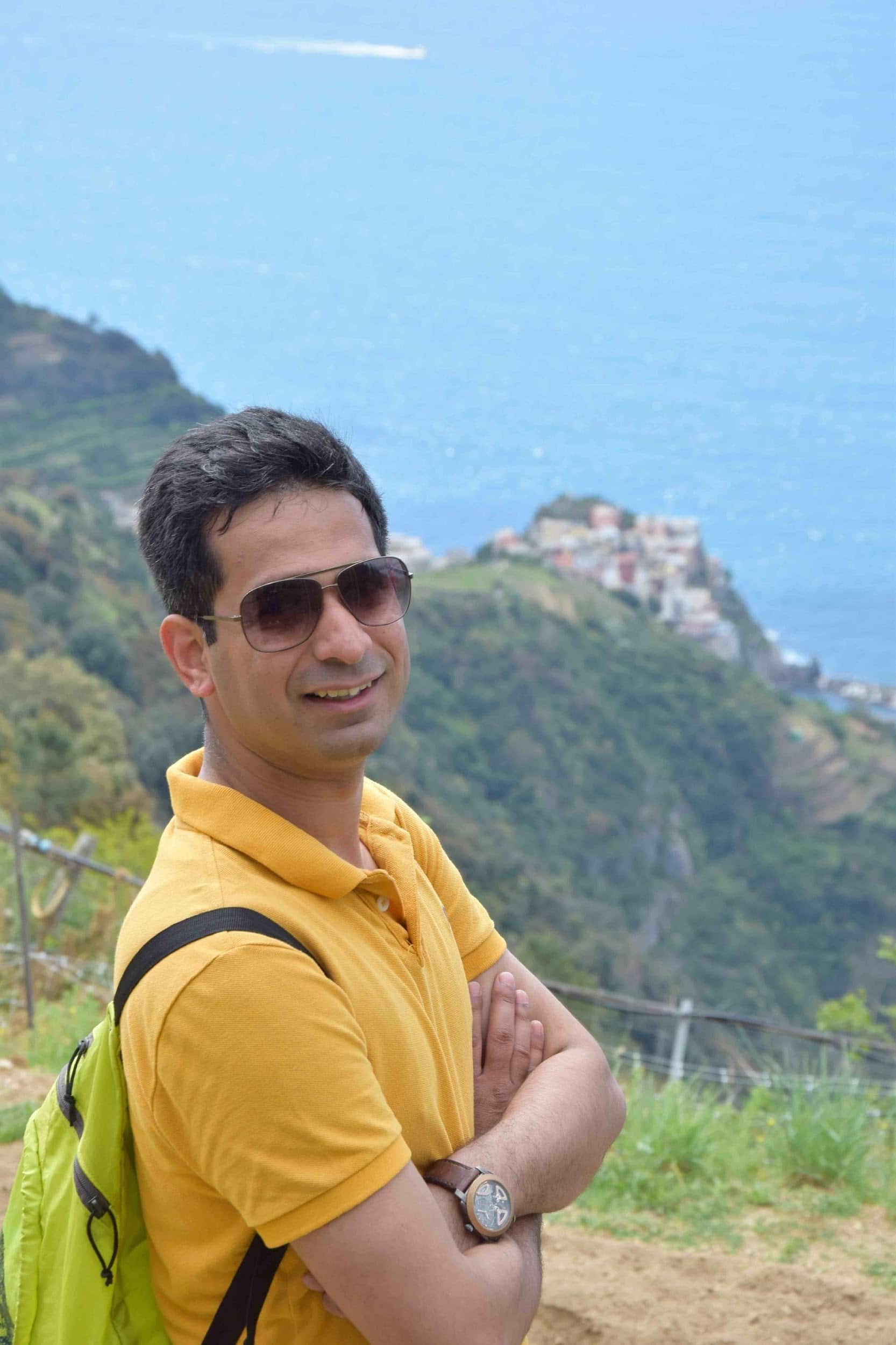Project
However, significant challenges remain in converting this promise for quantum technologies, especially in the areas of development of high-quality materials and suitable device structures that are scalable for technology or can provide access to fundamental studies. We aim to focus on the development of some of these promising materials and their devices. Of particular focus are boron-doped diamond for superconducting qubits, quantum defects as nitrogen-vacancy (NV) centers in diamond for magnetic spectroscopy and imaging platform, emergent quantum materials such as Kitaev magnets and novel rare earth based Heusler phase topological insulators. We aim to complement our experimental efforts with theoretical and numerical investigations of defects in diamond, unconventional phases, such as quantum spin liquids, and their excitations, unconventional superconductivity and topological phenomena.
We are proposing a Quantum Center to focus on some emerging impact research areas that are attracting substantial interest globally, both in academia and industry, due to their transformative potential. Understanding the implications of quantum phenomena such as superposition, entanglement and topology has been an area of intense theoretical studies during the last century. Several important theoretical works showed the possibility of developing a revolutionary technology where quantum effects play a significant role. Only now have the experiments started catching up, being able to prepare, control and measure quantum states precisely enough for a technology to look viable. These advances on the experimental front have also given a lot of promise to investigate some of the fundamental aspects of quantum mechanics. Furthermore, advances in growth techniques and defect engineering, along with insights from computational physics and chemistry regarding material properties, have led to availability of families of condensed matter systems where quantum effects play a significant role.
In materials, such as Diamond and SiC, artificial atoms created within the lattice by defect complexes have shown remarkable properties for use in emerging quantum technologies. Quantum defects such as Nitrogen-Vacancy (NV) and Silicon-Vacancy (SiV) centers in diamond, and Silicon-Divacancies in SiC offer an unparalleled combination of optical and spin properties that makes them leading candidates for several quantum technologies.
High-quality growth with precise defect engineering is needed for developing diamond-based quantum technologies. As such this materials development will be crucial for the project. We propose to develop sensing devices based on these quantum defects which brings with it engineering challenges or integration and miniaturization to overcome. We will apply diamond sensors for studying novel quantum materials, and resources permitting other materials and devices. Additionally, we will explore multiple approaches to improving sensitivity that have not been studied in detail.
We will apply advanced photonic, quantum electronic and microscopy techniques to realize a unique platform for quantum science technology: we will explore quantum materials like diamond using atom-probe tomography and related high-resolution techniques. We will investigate the quantum systems using advanced photon sources, synchrotrons, free-electron lasers and entangled photons in combination with techniques such as angle-resolved photoelectron spectroscopy, coherent diffractive imaging, velocity-map imaging and multi-coincidence spectroscopy. We will also build a platform for entangled photon spectroscopy to study important quantum aggregate systems and quasi-particles in quantum materials.
A key quantum phenomenon of interest to us is superconductivity in boron-doped diamond (BDD). We aim to further existing studies on this material by developing devices from it for use in quantum technologies. This will involve challenging materials growth and fabrication. Additionally, we will also explore superconductivity in p-type diamond that holds the promise for room temperature superconductivity under the right, but challenging doping conditions. We are probably the only group in India that have established superconductivity in BDD and many collaborative groups from abroad appreciate our BDD sample quality for various quantum-related experiments.
While much has been accomplished both experimentally and theoretically, especially in the last two decades, much still remains to be done, both in developing diamond-based quantum technologies, and in understanding the basic physics of emergent materials and moving them also towards technological applications. We aim to address some of these shortcomings in the knowledge gap of both the science and engineering of these materials.
Novel quantum states such as quantum spin liquids (QSL) and quantum Hall effect are some of the outstanding paradigms that hold special prominence in modern condensed matter in view of the exotic fractional excitations such as spinons and Majorana fermions coupled to emergent gauge fields, which may address some of the fundamental challenges in condensed matter and offer a rich ground for potential applications. In this context, frustrated quantum magnets and topological insulators are some of the emergent quantum materials with rich potential to host topological quantum states and fractional quantum numbers. Emergent phases of quantum matter are being actively pursued for their promise towards future development of quantum technologies. Among them the topological insulators show an energy gap in the bulk and non-trivial conducting properties at edges/surface that are protected by time reversal symmetry. Combining them with magnetic or superconducting materials leads to novel phases of matter and has started research in new areas of physics like topological spintronics and applications in quantum computation.
We aim at exploring novel frustrated magnets including Kitaev quantum magnets and Heusler phase topological insulators potential to host myriads of emergent quantum phenomena. Two dimensional Kitaev model on a honeycomb lattice offers an exactly solvable model and proposed to host myriad of quantum phases including QSL, elusive Majorana fermions–particles that are their own antiparticles, and non-abelian statistics. Frustrated quasi-two dimensional quantum materials offer an exciting setting in hosting correlated quantum states including Bose Einstein Condensation. The Heusler phase topological insulators are proposed to host exotic quantum phenomena including novel magnetic order, non-centrosymmetric and topological superconductivity by suitable control of the lattice parameter of the rare earth ion.
While the experimental investigation of emergent quantum materials by the state of the art nuclear magnetic resonance, muon spin relaxation and Inelastic neutron scattering techniques in probing the electron spin fluctuations on a complementary scale relevant to the science field of the project is at the heart of the proposed studies, synthesis and characterization (by advanced thermodynamics) of the new materials is an important upstream stage and pose one to one correspondence. During the course of these studies, the experimental results will be discussed with suitable theoretical frameworks to understand the ground state properties and associated exotic fractional excitations in the proposed quantum materials.
In other materials, a combination of electron-electron correlations, spin-orbit coupling, coupling of order parameters, strain effects, etc. have led to materials that display novel electronic and magnetic states and Emergent physical phenomena such as quantum spin liquids, spin-ice and Bose-Einstein Condensation. These materials offer an excellent testbed for comparing theory and experiments and provide deeper insights into fundamental quantum effects. Effects arising from spin and topology are of particular importance for us. These materials may eventually provide better alternatives for applications in quantum technologies.





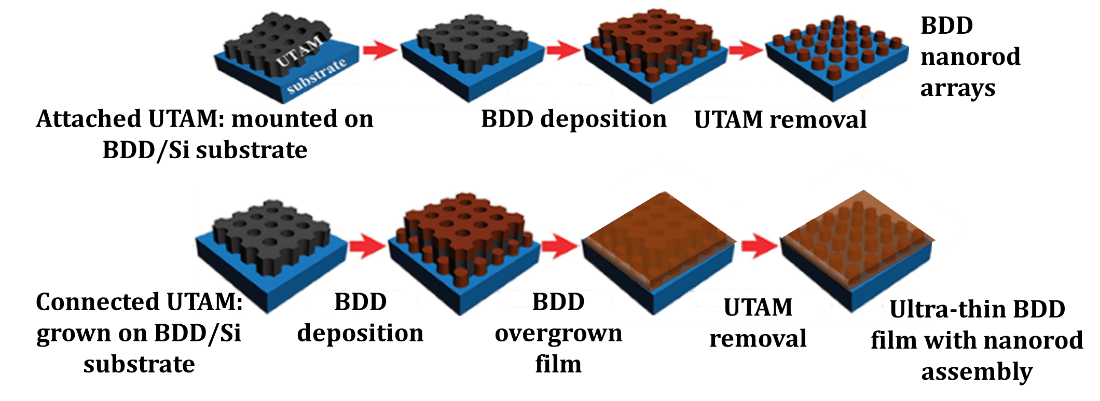
Nano-patterning of Single Crystal Diamond
Expected deliverables of the research
Development of high-quality single and polycrystalline crystal diamond with controlled defects and doping as needed for quantum devices.
Development of boron-doped diamond based superconducting devices and structures as needed for them.
Development of NV-diamond quantum defect based magnetic sensing, imaging and spectroscopy techniques and tools based on them.
Develop strategies for color center generation in diamond and other materials for quantum technologies
Synthesis quantum materials in both bulk and thin film forms.
Experimental and theoretical studies of unconventional phases, excitations and non-trivial phenomena in emergent materials.
Experimental explorations of the physics of quantum materials and aggregates using advanced light sources – entangled photons, synchrotrons and free-electron lasers.
Current status
Some relevant Recent Publications by group members:
Atomically Thin Quantum Spin Hall Insulators, Michael S. Lodge, Shengyuan A. Yang, Shantanu Mukherjee, Bent Weber, Advanced Materials, Volume: 2008029 Page: 1, 2021
Development of short and long-range magnetic order in the double perovskite based frustrated triangular lattice antiferromagnet Ba2MnTeO6, J Khatua, T Arh, Shashi B Mishra, H Luetkens, A Zorko, B Sana, MS Ramachandra Rao, BRK Nanda, P Khuntia, Scientific Reports, 11, 1-14, 2021
Evidence for a three-dimensional quantum spin liquid in PbCuTe2O6, S. Chillal, Y. Iqbal, et. al., Nature Communications, V 11, 2348, 2020
Broadband multi-magnon relaxometry using a quantum spin sensor for high frequency ferromagnetic dynamics sensing, Brendan A. McCullian, Ahmed M. Thabt, Benjamin A. Gray, Alex L. Melendez, Michael S. Wolf, Vladimir L. Safonov, Denis V. Pelekhov, Vidya P. Bhallamudi, Michael R. Page, & P. Chris Hammel, Nature Communications, V11, Article number: 5229 (2020)
Coincident angle-resolved state-selective photoelectron spectroscopy of acetylene molecules, S Mandal, R Gopal, H Srinivas, A D’Elia, A Sen, S Sen, R Richter, M Coreno, B Bapat, M Mudrich, V Sharma, S R Krishnan, Faraday Discussions DOI: 10.1039/D0FD00120A
Mudrich, M., et al. “Ultrafast relaxation of photoexcited superfluid He nanodroplets.” Nature communications 11.1 (2020): 1-7.
High-pressure behavior of superconducting boron-doped diamond, Mahmoud Abdel-Hafiez…MS Ramachandra Rao. Phys.Rev.B. 95 (17), 174519.
Realization of highly conducting n-type diamond by phosphorus ion implantation. Dhruba Das, Asokan, K, M.S. Ramachandra Rao. Appl. Phys. Lett. 118, 102102 (2021);
Infrastructure development
Existing: TEM and SEM, Atom probe tomography, Thin-film xray diffraction (XRD), X-ray Photoelectron Spectroscopy (XPS), Femtosecond laser system, Physical Property Measurement System (PPMS), Cryogenics - Helium and nitrogen liquifiers, Wire-bonding station, Probe-stations
In development/purchase: Microwave CVD system, cryogenic ODMR and SQE, Measurement systems, dilution fridge insert for thermal measurements in PPMS, High-end simulation computers,
Infrastructure development
Existing:
- Electron microscopy – transmission electron microscopy and scanning electron microscopy,
- Atom Probe Microscopy,
- Thin film X-ray diffraction (XRD),
- X-ray Photoelectron Spectroscopy (XPS),
- Femtosecond laser (Astrella, Coherent Inc.),
- Physical Property Measurement System (PPMS),
- Low-temperature physics facilities - Helium and nitrogen liquifiers,
- Wirebonding station,
- Probe stations
Being installed:
- Microwave chemical vapor deposition system (for diamond growth),
- Cryogenic Optical Domain Magnetic Resonance (ODMR) Spectroscopy system
- Single- and Entangled-quantum emitter systems,
- Quantum measurement systems - Hanbury-Brown and Twiss (HBT), Hong Ou-Mandel (HOM)
- Upgradation - Dilution fridge insert for thermal measurements in PPMS,
- High-end simulation computers.
Collaborations
International Collaborations
Nanyang Technological University
- Prof. Bent Weber link
National University - Singapore
- Prof. T. Venkatesan, Nano-core link
Freie Universität-Berlin
- Prof. Dr. Johannes Reuther link
George Mason University
- Prof. Igor I. Mazin link
Tel Aviv University
- Prof. Ady Arie link
Neils Bohr Institute, Copenhagen
- Prof. Brian Andersen link
University of Waterloo
- Prof. Michel Gingras link
Harvard University
- Prof. Subir Sachdev link
Helmholtz-Zentrum-Berlin
- Prof. Dr. Bella Lake link
University of California - Santa Barbara
- Prof. Leon Balents link
Cristallographie et Sciences des Matériaux (CRISMAT), Caen, France
- Prof. Willfrid Prellier link
University of Hannover
- Prof. Uwe Morgner, PhoeniXD link
University of Wisconsin - Milwaukee
- Prof. Daniel Agterberg link
Goethe University, Frankfurt
- Prof. Dr. Roser Valentí link
University zu Köln
- Prof. Dr. Simon Trebst link
University of Maryland - College Park
- Prof. Steven Anlage link
Moscow State University
- Prof. Vasiliev link
University of Melbourne
- Prof. Stephan Rachel link
Walther Meissner Institute, Munich, Germany
- Prof. Rudolph Gross (Director) link
Julius Maximillians Universitaet, Würzburg
- Prof. Dr. Ronny Thomale link
Wigner Research Centre for Physics, Budapest
- Prof. Karlo Penc link
Kyushu University, Daigaku
- Prof. T. Okada and Dr. D. Nakamura link
University of Toulouse
- Prof. Didier Poilblanc link
Aarhus University
- Prof. Marcel Mudrich link
Elettra Sincrotrone, Trieste, Italy, and Consiglio Nazionale delle Ricerche
Shibaura Institute of Technology, Tokyo
- Prof. M. Murakami and Prof. Muralidhar Maryala link
Ohio State University
- Prof. Nandini Trivedi link
University of Montpellier
- Prof Werner Paulus link
Max-Planck-Institut für Kernphysik (MPIK), Heidelberg
- Prof. Thomas Pfeifer, Director – Quantum Dynamics, MPIK. link
University of Florida
- Prof. Peter Hirschfeld link
University of Trieste
- Prof. Federico Becca link
International education programs, conferences/seminar/webinar links
- Planned International programmes
- International Master’s program in Quantum Science and Technology.
- Ongoing programmes
- MaMaSELF+ (Masters in Materials Science Exploring Large Scale Facilities) under the European Union’s ERASMUS MUNDUS program since 2008 link
- MSR Rao has been a part of the European Masters program for the past 12 years. He teaches In the MaMaSELF program.
- IIT Madras has been a non-European partner Institute of the consortium since a dedace.
Industrial collaborations
- Murugappa group
- Prof. M. S. Ramachandra Rao, Dr S Sathyan, Dr N Arunachalam Diamond-coatings and diamond-based technologies
- Carborundum Universal Limited
- Dr. N. Arunachalam, Prof M S Ramachandra Rao, Dr S Sathyan - Diamond technologies
- ISRO-Space Applications Center
- Dr. N. Arunachalam, Prof M S Ramachandra Rao, Dr S Sathyan – space relevant technologies
- Kapindra Precision Engineering Private Limited (Incubated company):
- Prof M. S. Ramachandra Rao, Dr N Arunachalam and Dr. S. Sathyan
- Innovative Materials Technology Limited
- A leading start-up for single crystal diamond growth in India
- Technos Instruments
- Dr Vidya Praveen Bhallamudi A start-up based in India for dealing with development of scientific tools in microscopy and spectroscopy for research purposes.
Societal impact
The societal impact of the proposed work on free-standing diamond membranes will be unique as the immediate applications will be to use these systems in bio-molecule sensing and water purification. Radiation detectors for cancer treatment is another application that will be explored as indigenous development of radiation detectors is the need of the hour for the society. Affordable surgical knives is another technology that would evolve from this work. The above applications will surely attract Corporate Social Responsibility (CSR) funding. Higher-end products (on par with international competence): As a pioneering group in diamond technology, we would, through this CoE activities, launch into fabrication of SQUIDs (Superconducting Quantum Interference Devices) using Boron doped diamond and magnetometry (highly sensitive magnetic sensors) using optimized NV centers in diamond (doping control is the key and the team has enormous expertise in doping/implantation aspects). Integration diamond layers into electronic devices is the key. Diamond is considered as a wonderful material for deep UV devices. With the doping expertise we have, fabrication of deep UV devices should be possible and these will be the first diamond based devices in the country.
Sustenance statement
Governmental agencies and companies are heavily investing in quantum technologies with a long-term view. As such sustenance should be possible for this CoE dealing with quantum materials and technologies. For example, GoI has initiated the Rs. 8000 crores National Mission of Quantum Technologies. The quantum computing market is estimated to be $64 billions by 2030 while the sensors market is peojected to be ~$300 millions.
The PIs have an excellent track record of obtaining funding for establishing centers and carrying scientific projects, and in developing industrial collaborators and incubating start-ups.
Members of this team have already obtained (cumulatively) a total funding of over Rs. 10.00 crores in projects related to the CoE. Besides this several other support infrastructure and much-needed characterization tools have already been obtained by the PIs in previous grants.
High-value projects obtained: 6 cr under QuST and STARS programs (directly related to CoE’s mission), 8 crores (DRDO), 1.5 crores (CEFIPRA + Simon’s Foundation), 3.6 crores DBT-Wellcome Trust; Tech. Dev. Board (DST) 3.4 crores, IMPRINT (MHRD) 1.4 crores.
Experience in building centers: NFMTC (35 crores in Phase I and II) Solar hub (40 crores) Facilities with these centers also provide crucial support facility to carry out our research, National facility for Atom Probe Tomography (with a funding of ~40 crores with IIT Madras as the Nodal center.
Reference
Nature Physics 16, 469 (2020) link
Science 357, 75 (2017) link
IIT Madras-incubated Start-up Kapindra develops Novel Diamond Coatings - Education Today News (indiatoday.in)link
India Institute of Technology purchases sp3 hot filament CVD diamond deposition tool | Semiconductor Digest (semiconductor-digest.com) link
Start-up uses diamond to help hypersonic missile re-entry- The New Indian Express link
Three tech mission centers on solar energy and water treatment at IIT Madras | Chennai News - Times of India (indiatimes.com) link
IIT-M start-up develop diamond coatings on heat dissipation for re-entry of hypersonic missiles into earth’s atmosphere (uniindia.com) link
IIT Madras-incubated start-up develops diamond coatings link
Chennai Based Start-Up Uses Diamond To Help Hypersonic Missile Re-Entry link
Technical/ Scientific Progress
New work done in the project
- Detailed electron paramagnetic resonance studies of nitrogen related spin defects in diamond to understand their behavior upon laser illumination and to quantify defects
- Quantum simulations to understand the behavior of spin qubits under pulsed periodic microwave drive, under the principles of Floquet engineering and dynamical decoupling. We are developing new pulse protocols and understanding the effects of pulse shapes and non-idealities that can occur during experiments.
- We have also performed simulations to understand the off-resonant coupling of NV and P1 spins in diamond, to shed light on a potential technique for nanoscale paramagnetic spectroscopy.
- Optically trapped NV center bearing nano- and micro-diamonds and then studied multiple avenues to rotate the diamond crystals in both in-plane and out-of-plane senses. The in-plane rotation is well known, but the strategies to turn in the out-of-plane sense using optical tweezers are beginning to be explored.
- Studying the best options of laser wavelengths to optically trap diamond crystals in the nano- and micro-scales while simultaneously addressing the NV center spins with 532 nm laser excitation. We are also trying to perform Optically Detected Magnetic Resonance imaging while the crystal is optically confined in controlled orientations.
- Exploring various technologies available for shaping grown single-crystal diamonds for multiple applications.
- Working on growing nanopillars and rods using anodization process as templates for manufacturing patterned single-crystal diamond structures.
- Working on single-crystal diamond-based sensors for bio applications.
- Our comprehensive experiments reveal an anisotropic magnon gap and an Ising type interaction between magnetic moments in a frustrated triangular lattice antiferromagnet.
- Our comprehensive studies established a randomness-driven spin-liquid-like dynamic state in a three-dimensional frustrated magnet.
- Using strong coupling models explained the quasi 1D Fermi surface observed in ARPES experiments for strongly correlated material Sr3Ru2O7. Further explained how quasi-particle interference experiments show magnetic order in this material system.
- Developed a model that shows quantitative agreement with STM experiments probing edge state properties and proximity induced superconductivity in quantum spin Hall insulator WTe2. Developed a theoretical model to explain the observation of Luttinger Liquid physics at the quasi 1D edge states.
- Helped develop a better understanding of the role of disorders like non-magnetic and magnetic impurities in non-centrosymmetric superconductors. Further, we developed a microscopic model to explain how superconducting wave functions mix near twin boundaries.
- Developed a state-of-the-art “Multiloop functional renormalization group approach to quantum spin systems”. The manuscript is currently under review in Physical Review X.
- In collaboration with experimentalists at large-scale neutron scattering facilities worldwide, we have identified and developed a theory for novel and rare quantum material in 3D which hosts a quantum spin liquid ground state. The work has been published in the prestigious journal “Physical Review Letters” join
- Revealed the nature of unconventional pairing the kagome AV3Sb5 material, which is currently one of the most hotly pursued superconductors. This research has been published in the prestigious journal “Physical Review Letters” join
- Following the recent reporting of an exotic gapless quantum spin liquid state in the shuriken lattice, we have developed a theoretical understanding of its microscopic origin. The work has been highlighted in Physical Review B Letters as an “Editors’ Suggestion” join.
- Performed three research campaigns at world-class x-ray free-electron lasers (XFELs) FLASH in Hamburg and FERMI in Trieste, Italy.
- Published papers on quantum dynamics and x-ray photonics in reputed journals.
- A globally competitive proposal for beamtime at the Elettra synchrotron written as part of pCoE research has been granted.
- Near white light emission is observed from LaCr0.75Ga0.25O3
- As the Ga concentration increases, the 2E→4A2 becomes dominant and gives rise to NIR emission and NIR lasing with 488 nm laser excitation.
- The picosecond lifetime and g value indicate the pair emission induced lasing. These results have been published in journals recently.
Infrastructure developments
- A critical infrastructure that will be at the heart of a lot of the work in our quantum-diamond-related work, a Microwave Plasma CVD unit for the growth of custom diamond samples, has been purchased and installed successfully. This was done remarkably quickly by identifying a suitable class II supplier.
- A Quantum Defects lab has been established with funds from DST and STARS projects. Essential equipment for photon and spin-based quantum experiments (cryostat, confocal microscope, picosecond pulse-laser, time-correlation measurement units with single-photon counters) have been or are being installed shortly. The pCoE funds will crucially complement these efforts. This includes the purchase of a cryostat for low-temperature magneto-optical studies of quantum sensors and materials. This item was jointly purchased with the pCoE on Quantum 2D materials (PI Abhishek Misra), who also purchased an accompanying micro-Raman system.
- Waiting for delivery of dilution fridge insert for the existing PPMS.
- Purchased an Apple MacPro 28-core workstation for performing memory-intensive Variational Monte Carlo and Functional Renormalization Group calculations.
- Partly completed the purchase of equipment for single- and entangled-photon source and detection.
- Establishing a new lab space for quantum photonics experiments.
- Facility of Anodisation to create nanostructured alumina and titanium dioxide membranes for single crystal diamond growth was created.
Output
Media highlights:
- Our entry entitled “Diamond based MEMS acoustic vector sensor“ under the problem domain of “Underwater MEMS Acoustic Vector Sensor“ has been selected as Winner for “Dare to Dream 2.0” innovation contest, 2021.
- The work on Breaking the diffraction limit in absorption spectroscopy using upconverting nanoparticles Highlighted in “The Hindu” newspaper.
Publications:
Seminars/Colloquia:
- PI M. S. Ramachandra Rao has given several invited talks at international level conferences, some are highlighted here
- Light emission from doped ZnO nanostructures and microspheres prepared by laser ablation process; MRM, Yokohama, Japan
- Observation of enhanced conductivity in n-type nanocrystalline diamond implanted with nitrogen and Phosphorus; AAAFM, UCLA, USA
- A brief exciting tale of two different wide bandgap quantum materials, RRCAT, Indore
- Quantum Materials and Advances in Technology, SRM University, Chennai
- Functional Materials and Diamond Coatings for Technological Applications, NIT Srinagar
- Shaping of Experimental Condensed Matter Physics by Modern Physics, IIT Tirupati
- Materials and Technology developments: Green energy, power harvesting and sustainable coatings, Shibaura Institute of Technology (SIT), Japan
- Emergence of Nanoscience in everyday life, Madras University (Science-Day colloquium)
- Co-PI Praveen Bhallamudi has given six invited talks at international level conferences (QIQT, AC2MP, QMAT, IWPSD, MSRI)
- Two of his students have given poster presentations (Anshuman Naik, QMAT; Anand Patel IWPSD) and 2 students have given an oral presentation (Anand Patel, IEEE Rapid; Zainab Chowdhry, MRSI). Two other abstracts by students (Madhura Ghosh Dastidar and Zainab Chowdhry) have been accepted at APS March Meeting
- Ph.D. student (Joydev Khatua, Guide: PK)) has given an oral presentation (2021 MRS fall meeting, Boston, MA, USA).
- Co-PI Sivarama Krishnan has given two invited talks (Institute of Quantum Optics and PhoenixD, University of Hannover, IIT-ISM Dhanbad)
- Students from SRK’s group contributed to conferences: Optical Soc. of America, SPIE, AttoChem 2021, AIP Conference, Metamaterials (Meta) 2021.
- Co-PI Yasir Iqbal has given six invited talks at international level conferences
- Pinwheel valence-bond-crystal ground state of the spin-1/2 Heisenberg antiferromagnet on the shuriken lattice, “4th National Conference on Quantum Condensed Matter (Q-Mat 2021)”, TIFR Mumbai, India, 8-11 Dec, 2021.
- Gutzwiller-projected states for the J1–J2 Heisenberg model on the Kagome lattice: Achievements and pitfalls “5th Young Investigator Meet on Quantum Condensed Matter Theory”, NISER Bhubaneswar, India, 16-19 Nov, 2021.
- Invited Talk at seminar “Numerical Many Body Approaches in Emergent Quantum Materials”, 14 December, 2021 at Budapest University of Technology and Economics, Budapest, Hungary
- Invited Talk at Wigner Research Centre for Physics, Budapest, Hungary, 17 December 2021.
Workshop/webinar organization
- Third Indian Materials Enclave and 32nd Annual General Meeting of the MRSI, IIT Madras, Dec. 20th -23rd (virtual mode)
- Workshop on Frustrated Metals and Insulators 2022 (funded by TIFR and Wu ̈rzburg-Dresden cluster of excellence, Germany) to be held at ICTS-TIFR, Bengaluru from 5-16 Sep, 2022: Or- ganizers - Yasir Iqbal (IITM), Federico Becca (Uni Trieste), Ronny Thomale (Uni Wu ̈rzburg), Yogesh Singh (IISER Mohali), Bella Lake (HZB, Berlin), Subhro Bhattacharjee (ICTS).
- French-Indian workshop on Novel Phases of Matter in Frustrated Magnets 2021 (funded by CE- FIPRA) to be held at the University of Bordeaux, France from 5-8 Dec, 2022: Organizers - Yasir Iqbal (IITM), Ludovic Jaubert (Uni Bordeaux), Arnab Sen (IACS), Didier Poilblanc (Uni Toulouse).
- SRK Organized a webinar on synchrotrons and free-electron laser sources. Editing
- SRK Completed co-editing an issue for the European Physical Journal Special Topics.
Grants awarded(All YI)
- IFCPAR/CEFIPRA (Indo-French Centre for the promotion of Advanced Research): Collabora- tive Scientific Research Programme – Joint Project with Co-PI in France: Dr. Didier Poilblanc, University of Toulouse.
- Simons Associateship of the International Centre for Theoretical Physics, Trieste, Italy, funded by the Simons Foundation
- DST-SERB Startup Research Grant (16 Dec 2019 – 15 Dec 2021)
- DST-SERB MATRICS (17 Feb 2020 – 16 Feb 2023)
- JSPS Invitational Fellowship, Okayam University, Japan Proposals submitted
- CEFIPRA proposal for bilateral research with Prof. Nicolas Sisourat, University of Sorbonne, France, has been submitted.
- DST-DAAD proposal for bilateral research with Prof. Milutin Kovacev, Leibniz University Hannover, Germany, has been submitted.
- Multiple HRHR proposals for mobility have been submitted to Global Engagement, IIT-Madras.
- Proposal to the OU – IITM bilateral research initiative in quantum science and technology has been submitted
- A technology development project proposal on “Single-crystal diamond for acoustic sensor applications” was submitted for funding to DST, India
Mobility
Visits planned for PI, co-PIs, international collaborators and students (both inbound and outbound)
Inbound
- Prof. Gniewomir Sarbicki of Nicolaus Copernicus University is visiting from Jan-Feb 2022
- Will host overseas visiting faculty Prof. Marcel Mudrich, at IIT-M in Jan. 2022.
- Visit of Prof. Dr. Ronny Thomale (University of Würzburg, Germany) to IIT Madras as a Vajra level Visiting Faculty Fellow from 1st February 2022 till 30th April 2022.
- Visit of Prof. Dr. Johannes Reuther (Freie University Berlin, Germany) to IIT Madras as a Visiting Faculty Fellow from 19th February 2022 till 18th April 2022.
- Visit of Prof. Dr. Karlo Penc (Wigner Research Center for Physics, Budapest, Hungary) to IIT Madras as a Visiting Faculty Fellow from 1st April 2022 till 15 May, 2022.
- Visit of Prof. Dr. Zohar Nussinov (University of Washington at St. Louis, USA) to IIT Madras as a Visiting Faculty Fellow from 1st May 2022 till 31st May, 2022.
- Visit of Prof. Dr. Arnaud Ralko (University of Grenoble, France) to IIT Madras as a Visiting Faculty Fellow from 1st August 2022 till 31st August 2022.
- Visit of Prof. Dr. Ludovic D. C. Jaubert (University of Bordeaux, France) to IIT Madras as a Visiting Faculty Fellow from 1st August 2022 till 4th September 2022.
- Visit of Dr. Francesco Ferrari (Goethe University Frankfurt, Germany) to IIT Madras as visiting postdoc.
- Visit of Dr. Dominik Kiese (University of Cologne, Germany) to IIT Madras as visiting postdoc
- Visit of Dr. Juraj Hasik (University of Amsterdam, Netherlands) to IIT Madras as visiting postdoc
- Visit of Mr. Nils Niggemann (Freie University Berlin, Germany) tot IIT Madras as visiting PhD student Outbound
- Led a research campaign (beamtime) at the x-ray free-electron laser FLASH, Hamburg, Sept. – Oct. 2021.
- Performed a research campaign at the FERMI soft x-ray laser at Elettra, Trieste, Italy, Nov. – Dec. 2021.
- Delivered an invited (in-person) colloquium at the Institute of Quantum Optics, Leibniz University Hannover, Germany.
- Keshav Sishodia will visit Max Planck Institute for Nuclear Physics, Heidelberg, and Aarhus University in 2022.
- Research campaign in 2022 at the Linear Coherent Light Source (LCLS), Stanford. hard x-ray free electron laser.
- Research campaign in May – June 2022 at the Elettra synchrotron, Trieste, Italy – proposal granted and dates confirmed, collaboration with Prof. Marcel Mudrich.
- Research campaign May – June 2022 at the European X-ray free electron laser (EuXFEL)– proposal granted and dates, collaboration with Prof. Marcel Mudrich.
- Visit of Yasir Iqbal to the Wigner Research Centre for Physics, Budapest, Hungary from 28.11.2021 till 24.12.2021 for the purpose of scientific collaboration on ongoing research projects.
- Visit of Yasir Iqbal to Laboratoire de Physique Théorique (CNRS) and University of Toulouse, France from 13.01.2022 till 11.02.2022 for research collaboration on ongoing projects and joint supervision of IITM-Univ. Toulouse Ph.D student, Mr. Sasank Budaraju.
- Visit of Yasir Iqbal to Julius-Maximilian’s University of Würzburg, Germany from 14.01.2022 till 18.01.2022 to deliver an invited talk at workshop on “Functional renormalization group in correlated electron systems”.
Relationship
Industrial Engagement
Engaging with Innovative Materials Technology for the development of custom diamond samples as needed for our quantum experiments.
University Engagement
- Strong collaborative effort with Tel Aviv University (TAU) is being established. An MoU has been signed for Joint Degree programs and the first bilateral mobility program under IoE was floated with TAU, focused on quantum-related efforts.
- A major collaborative effort with Oklahoma University has been established centered around quantum science and technology (QuST) related efforts. Bilateral mobility program proposal has been put in.
- Initiated joint Master’s and joint Ph.D. program with Julius-Maximilian’s University of Würzburg, Germany
Updates
Relevant Updates
- QuantuTalks and QuantumMatters: We have started a successful webinar series (QuanTalks) to bring high-quality talks by international leaders on quantum science and technology. We have also a quarterly newsletter (QauntuMatters) for publicizing our research work.
- Student development: This is a key aspect of any educational institution. To add value to students’ careers, we have encouraged and guided our students in writing proposals related to our pCoE’s work for highly competitive scholarships and they have managed to obtain scholarships such as PMRF and PMFDR, based on proposals primarily related to our center’s research. Exposure to quality research is a key aspect. And student mobility is being emphasized in our mobility and Joint degree programs. Once again, we are hoping that as the travel restrictions ease-out, we will be able to make use of funds allocated for these efforts.

